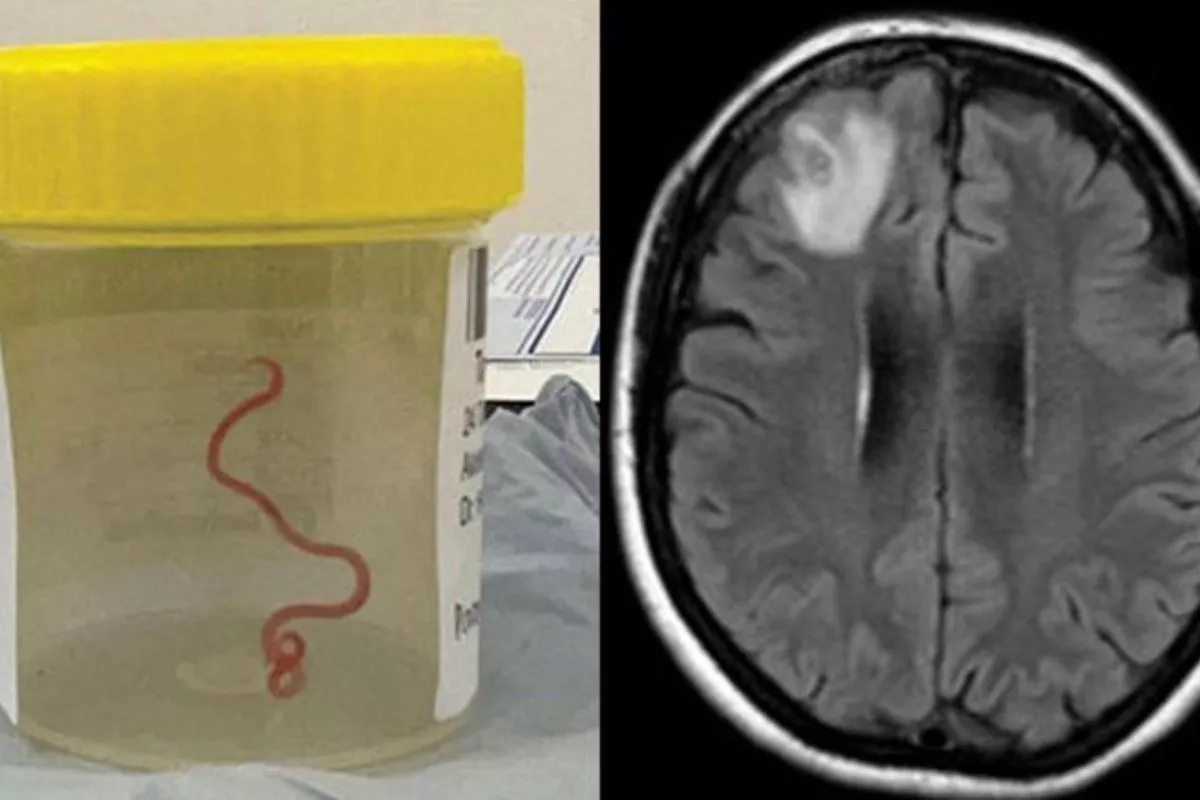
8 Centimeters worm
In the first example of its sort, Australian doctors examined a woman who had memory loss and depression symptoms and found an 8 centimeters live parasitic worm inside her brain. The patient, a 64-year-old lady from southeast New South Wales, was initially admitted to her neighborhood hospital in late January 2021 after experiencing stomach pain and diarrhea for three weeks, followed by a persistent dry cough, a fever, and night sweats.
Her symptoms expanded to include despair and amnesia by 2022, which led to a referral to a Canberra hospital. Her brain underwent an MRI scan, which revealed anomalies that required surgery.
Utter shock for the doctors on finding 8 Centimeters long worm
“But the neurosurgeon certainly didn’t go in there thinking they would find a wriggling worm,” Dr Sanjaya Senanayake, a Canberra hospital infectious diseases physician said. “Neurosurgeons regularly deal with infections in the brain, but this was a once-in-a-career finding. No one was expecting to find that,” he added.
This case stands out as a singular occurrence in medical history and has been identified as a third-stage larva of the nematode species Ophidascaris robertsi. The Emerging Infectious Diseases journal includes a report on the incident. Typically, this parasitic roundworm lives in the digestive tracts of New South Wales-native carpet pythons in Australia.
Also Read: Rare handwritten Apple-1 Ad Of Steve Jobs’ Sells For a Whopping 1.4 Crore At Auction
Experts working on her case
“Canberra is a small place, so we sent the worm, which was still alive, straight to the laboratory of a CSIRO scientist who is very experienced with parasites,” Dr Senanayake said.
“He just looked at it and said, ‘Oh my goodness, this is Ophidascaris robertsi’.” The experts working on her case proposed the hypothesis that a python may have released the parasite onto the grass in its feces. They hypothesize that the patient most likely acquired the parasite by contact with the local grass, transmission of the eggs to food or cooking utensils, or perhaps ingestion of the eggs while consuming greens.
To read more such news, download Bharat Express news apps






















